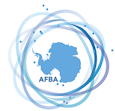
Assoc. Prof. Mark Stevens
South Australian Museum & University of South Australia
Mark completed his BSc (Honours) on native bees at Flinders University in 1997. He received a doctoral scholarship from the University of Waikato in New Zealand where he completed his PhD on amphipods and Antarctic springtails in 2003. He then moved to Massey University (The Allan Wilson Centre for Molecular Ecology and Evolution) as a postdoctoral researcher working with Prof David Penny, which allowed Mark to continue his Antarctic research. In 2004, he was awarded a four-year postdoctoral fellowship from the New Zealand Foundation for Research Science and Technology. In 2008 Mark joined the South Australian Museum as Research Scientist in the Terrestrial Invertebrates Section. Mark currently also holds an Associate Professor (Affiliate) position at the University of South Australia.
Mark’s research interests include invertebrates, and in particular work on Collembola, nematodes, tardigrades, and rotifers, but also Hymenoptera. Mark combines morphological and molecular data to determine the systematic position of Antarctic and Australasian groups. An important aspect to his current work is an integrated molecular, systematic and palaeoecological approach to allow patterns in phylogenetic/phylogeographic diversification to be traced from origins to the present and contrasted against climate/biome shifts (e.g. aridification).
Key publications
Czechowski P, Clarke LJ, Cooper A, and Stevens MI (2016) Antarctic eukaryotic soil diversity of the Prince Charles Mountains revealed by high-throughput sequencing. Soil Biology and Biochemistry. DOI: 10.1016/j.soilbio.2015.12.013
Velasco-Castrillón A, McInnes SJ, Schult, MB, María Arróniz-Crespo C, D’Haese CA, Gibson JAE, Byron BJ, Page TJ, Austin AD, Cooper SJB, and Stevens MI (2015) Mitochondrial DNA analyses reveal a widespread tardigrade diversity in Antarctica. Invertebrate Systematics, 29: 578-590. DOI: 10.1071/IS14019
Czechowski P, Sands CJ, Adams BJ, D’Haese CA, Gibson JAE, and Stevens MI (2012) Antarctic Tardigrada: a first step in understanding molecular operational taxonomic units (MOTUs) and biogeography of cryptic meiofauna. Invertebrate Systematics, 26: 526-538. DOI: 10.1071/IS12034
McGaughran A, Stevens MI, and Holland B (2010) Biogeography of circum-Antarctic springtails. Molecular Phylogenetics and Evolution, 57: 48-58. DOI: 10.1016/j.ympev.2010.06.003
Hardouin EA, Chapuis J-L, Stevens MI, Jansen van Vuuren B, Quillfeldt P, Scavetta RJ, Teschke M, and Tautz D (2010) House mouse colonization patterns on the sub-Antarctic Kerguelen Archipelago suggest singular primary invasions and resilience against re-invasion. BMC Evolutionary Biology, 10: 325. DOI: 10.1186/1471-2148-10-325

